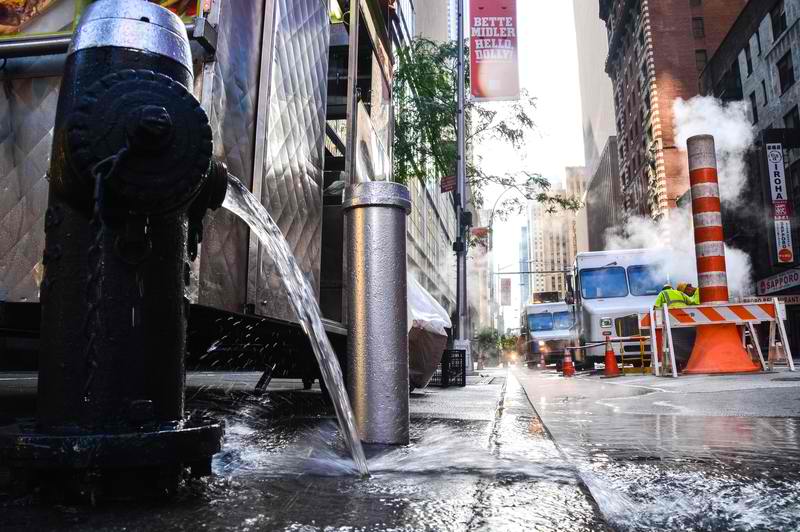Did you spot mold stains on your walls/ceilings after a water leak? Here’s how to prevent mold after a leak to save you from the hassle.
Water damage does not just weaken the structure of walls/ceilings, it can also trigger the growth of fungus. Mold is an example of a fungus that can pose a threat to your health, so you must prevent it at all costs.

How Much Time Does Mold Need To Grow After A Leak?
The rate of how fast mold grows depends on the humidity and temperature of the environment. The higher the level of these situations is, the faster the mold will start to grow.
Typically, it only takes 24 to 48 hours for mold to start growing after a water leak. The thing is, it will not be visible yet, so you will not have an idea that the fungus is starting to ambush your home.
You will only start to see visible signs after a week. At this rate, the mold has developed its roots and is rapidly growing on wet surfaces where the water leaked.
In just a matter of hours, your home will start smelling musty, and mold spores will fill the air.
Mold is not a simple problem that you can just shrug off. It can be dreadful!
8 Ways To Prevent Mold After A Water Leak
The health threats you can get from a mold after leaks that you did not fix immediately and properly can be devastating. It is why you need to take note of the following ways to prevent mold from growing after leaks happen to your place.
1. Do not waste time; fix the leak!
As much as possible, never delay the repair of water leaks. It is best that you fix it before a day passes.
2. Thoroughly dry the area of water damage immediately
When a leak happens, you have to make sure to dry the area as soon as possible. You can use dry and absorbent towels or invest in a dehumidifier to absorb moisture effectively.
3. Get rid of materials that cannot be dried
Materials that you can’t dry must be replaced with mold-resistant ones. Doing it will prevent the spread of mold from wet to dry areas.
4. Allow good ventilation
If it is not too humid outside, you can try opening the doors and windows to allow the air to flow. Fresh air will help prevent a high moisture level which is conducive for mold growth.
5. Turn off air conditioning and heating
A too cold and too hot environment will cause mold to grow. This is why it is better to keep the temperature normal.
6. Keep furniture away from the leak
When water leaks, move your furniture pieces away from the wet areas to prevent them from getting ruined. Furniture like sofas and mattresses will be hard to dry once wet, causing mold growth.
7. Turn off fans
The air from fans will cause mold spores to spread throughout your whole space.
8. Use exhaust fans
Exhaust fans venting outside your house will help prevent a high moisture level in the air, thus preventing mold from growing.
If you experience water leaks on your ceilings, you can check out this article for ways to prevent mold from growing.
Getting rid of mold after a leak
If you were not able to prevent mold after the leak, we provided ways to help you deal with it.
Use strong antimicrobial products
Find a good antimicrobial spray and spray it over the areas where there is mold. Let it sit for no less than a minute before wiping it off using disposable rags.
If you cannot purchase it, you can go for bleach and water solution or undiluted white vinegar.
Immediately dispose of the rags you used
Grab a bin bag and place all the rags you used in wiping off the mold. Make sure to tightly seal it to stop mold spores from escaping.
Wash everything you wore
There is a high possibility that the clothes you wore while cleaning already have mold spores in them. It is why you should not mix them with the other laundry and instead wash them immediately.
If your sofa were unfortunately damaged by mold, this guide about removing mold from upholstery would help you.
The dangers of mold
Mold, of any form and color, is dangerous to human health. Black mold is considered the most threatening one and can grow an inch per day, spreading rapidly.
This type can cause health complications like chronic fatigue and headaches, coughing, and skin and eye irritation.
If you are a sensitive person, exposure to mold may trigger allergic reactions and respiratory symptoms. Other types of mold can also cause skin rashes and severe symptoms like difficulty in breathing and lung inflammation.
Conclusion
Knowing how to prevent mold after a leak will not just save your house’s structure, but most importantly, you and your family’s health. You will never waste your time doing everything to stop this dangerous fungus from attacking you.
